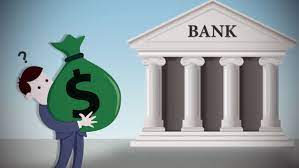The US economy slowed sharply from January through March, decelerating to just a 1.1% annual pace as higher interest rates hammered the housing market and businesses reduced their inventories.
Thursday’s estimate from the Commerce Department showed that the nation’s gross domestic product — the broadest gauge of economic output — weakened after growing 3.2% from July through September and 2.6% from October through December.
But consumer spending, which accounts for about 70% of U.S. economic activity, remained resilient, growing at a 3.7% annual pace, the fastest such rate in nearly two years. Spending on goods, in particular, was solid: It rose at its fastest pace since the second quarter of 2021.
Economists had been expecting overall GDP to grow at a 1.9% pace in the January-March quarter. Behind much of the quarter’s weakness was a sharp reduction in business inventories, which subtracted roughly 2.3 percentage points from overall growth. Companies typically slash their inventories when they anticipate a coming downturn.
The economy’s slowdown reflects the impact of the Federal Reserve’s aggressive drive to tame inflation, with nine interest rate hikes over the past year. The surge in borrowing costs is expected to send the economy into a recession sometime this year. Though inflation has steadily eased from the four-decade high it reached last year, it remains far above the Fed’s 2% target.
The housing market, which is especially vulnerable to higher loan rates, has been battered. And many banks have tightened their lending standards since the failure last month of two major U.S. banks, making it even harder to borrow to buy a house or a car or to expand a business.
“The economy had less forward momentum at the start of this year than previously thought,” Andrew Hunter of Capital Economics wrote in a research note. “We continue to expect the drag from higher interest rates and tightening credit conditions to push the economy into a mild recession soon.″
Many economists say the cumulative impact of the Fed’s rate hikes has yet to be fully felt. Still, the central bank’s policymakers are aiming for a so-called soft landing: Cooling growth enough to curb inflation yet not so much as to send the world’s largest economy tumbling into a recession.
There is widespread skepticism that the Fed will succeed. An economic model used by the Conference Board, a business research group, puts the probability of a U.S. recession over the next year at 99%.
The Conference Board’s recession-probability gauge had hung around zero from September 2020, as the economy rebounded explosively from the COVID-19 recession, until March 2022, when the Fed started raising rates to fight inflation.




